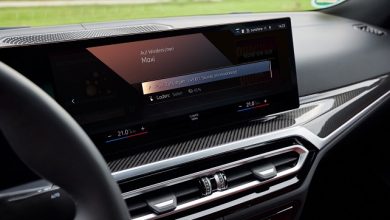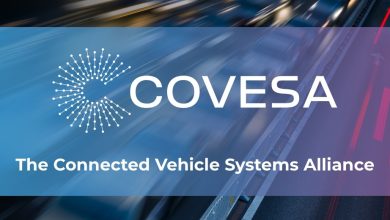Global Connected Car and Intelligent Transportation Systems market report 2022

The “Connected Car and Intelligent Transportation Systems” report has been added to ResearchAndMarkets.com’s offering.
This report addresses the current status of the Intelligent Transportation Systems (ITS), their structure, major applications, standardization and markets. The Intelligent Transportation Systems aim to improve the economy by reducing the number of road accidents (making driving safer), the amount of car air pollution and making smooth flow of the traffic.
The advances in the ITS are presently tied with the development of a “Connected Car” (CC) – a moving car that is wirelessly connected with surrounding cars and the infrastructure (as well as supporting connectivity inside of a car). Such a car opens a spectrum of new and exciting opportunities for automakers, service providers and users.
CC programs are now under development all around the globe. Though there are many technological choices to support CC communications, two technologies are leading:
- 5.9 GHz DSRC
- C-V2X
The report concentrates on those leaders; and analyzes their characteristics, parameters, marketing statistics, industries and the spectrum of applications. It also compares these technologies and their applicability to CC communications.
5.9 GHz DSRC technology is being tested and trialed in the U.S. for the last 23 years, and a rich collection of communications channels statistics has been gathered. This technology was considered for standardization by the U.S. DOT for CC communications. It has many attractions, such as the economies of scale based on the IEEE 802.11p standard, network simplicity and other. It also standardized and accepted in Europe. Note that the 2020 FCC rulemaking regarding the 5.9 GHz spectrum sharing established a solid ground for C-V2X technologies to lead CC communications.
Utilization LTE-A and its modifications for C-V2X communications attracts users by longer reaches, higher speeds, possibility of low latency (1-3 ms), and utilization of the cellular infrastructure in which CC communications will be only one of many use cases. The standard was finalized in Release 14 of the 3GPP; and the technology is lately under extensive testing and trialing. Two methods are being developed: a) D2D communications, and b) Broadcast communications. They are discussed in the report.
The report details specifics of 5.9 GHz DSRC and LTE-A for CC communications, their marketing aspects, and the related legislative work. It also concentrates on benefits and limitations of each technology and surveys related industries.
The industry concentrated attention on design and production of electronics that can support both technologies in one package – this is the current main trend in CC communications chipsets manufacturing.
The report is intended for a wide audience of technical and managerial staff involved in the ITS development; and particular concerns with marketing and technological aspects of a connected car; and for specialists in communications technologies that support advances in connected cars programs.
For them, it will provide the following up-to-date information and results of the analysis:
- ITS features, major goals, structure and market analysis
- CC concept, applications, properties, specifics and market analysis
- CC 5.9 GHz DSRC technology, standardization, protocols, industry and market analysis
- C-V2X LTE-A technology, standardization process, specifics and current status
- Comparison 5.9 GHz DSRC and C-V2X LTE-A technologies as they apply to CC communications
- Analysis of the LTE technology: benefits, properties, industry and market
- Survey of patents related to IEEE 802.11p and C-V2X.
Key Topics Covered:
1.0 Introduction
1.1 Statistics
1.2 Goal
1.3 Scope
1.4 Research Methodology
1.5 Target Audience
2.0 ITS: Systems in Actions
2.1 General
2.2 Composition
2.2.1 Formation
2.2.2 Subsystems
2.2.3 Layers and Components-Roadways
2.3 Key Technologies
2.4 ITS Standardization: In Progress
2.4.1 Overview
2.4.2 ETSI – Europe
2.4.3 U.S.
2.4.4 International
2.4.5 Summary
2.5 ITS Functionalities
2.5.1 Intelligent Infrastructure
2.5.2 Intelligent Vehicles
2.6 ITS Market Statistics
2.6.1 General
2.6.2 Assumptions
2.6.3 Estimate
3.0 Connected Car Specifics
3.1 General
3.1.1 Types of Connectivity
3.2 Legislation
3.2.1 U.S.
3.2.1.1 NHTSA Actions and Plans
3.2.2 Directions
3.3 Properties and Requirements
3.3.1 Methods
3.3.2 Network Requirements: 5G
3.3.3 Functional Technologies
3.4 CC: Driving Forces
3.5 Major Use Cases
3.6 Market
4.0 5.9 GHz DSRC
4.1 General
4.1.1 History- Spectrum
4.2 Industry Efforts – Cooperation
4.3 Place
4.4 Structure and Protocols
4.4.1 Requirements
4.4.2 Milestones
4.4.3 IEEE 802.11p
4.4.4 IEEE 1609
4.4.5 ETSI ITS-G5 – Major Features
4.4.6 ISO and DSRC
4.4.7 SAE and DSRC
4.5 Components and Procedures
4.5.1 Components
4.5.2 Procedures
4.6 Major Applications
4.6.1 EPS
4.7 Spectrum – DSRC – International
4.7.1 Channels Designation
4.8 Services
4.8.1 Major Services
4.8.2 Service Categories/QoS
4.8.3 Service Requirements
4.9 Summary: 5.9 GHz DSRC Characteristics
4.10 Benefits and Limitations – 5.9 GHz DSRC
4.10.1 General
4.10.2 Toll Industry Benefits
4.10.3 Limitations
4.11 Comparison
4.11.1 915 MHz DSRC and 5.9 GHz DSRC
4.11.2 CEN278 (5.8 GHz) DSRC and 5.9 GHz DSRC
4.12 Market Segment
4.12.1 Market Drivers
4.12.2 Market Requirements
4.12.3 Market Estimate
4.13 Industry
4.13.1 Industry Coalition
4.13.2 Recent Progress
4.13.3 Vendors
- AutoTalks
- Cohda Wireless
- Delphi
- Kapsch
- NXP
- Redpine Signals
- Qualcomm
- Savari
- Unex
- u-blox
4.14 Opinions
4.15 Advancements: 802.11bd
5.0 Cellular Technologies and Connected Car
5.1 Two Groups
5.2 3GPP Activities
5.2.1 Modes of Operations
5.2.2 D2D Communications
5.2.3 C-V2X Broadcast
5.2.4 Performance Comparison
5.2.5 Further Steps
5.3 Industry
- Autotalks
- AT&T/Audi-Tesla
- Broadcom
- Commsignia
- Cohda Wireless
- Ficosa
- GM
- Savari
- Qualcomm
6.0 Comparison: DSRC-802.11p and C-V2X
6.1 General
6.2 Details
6.2.1 Readiness
6.2.2 Networking
6.2.3 Range
6.2.4 Response
6.2.5 Scalability
6.2.6 Economics
6.2.7 Speed of Transmission
6.2.8 Versatility
6.2.9 Telematics
6.2.10 5G Vision
6.3 Trend
7.0 Connected Car – Groups and Alliances
7.1 Open Automotive Alliance
7.2 4G Venture Forum for Connected Cars
7.3 Apple – iOS in the Car
7.4 Connected Vehicle to Everything of Tomorrow Consortium (ConVeX)
7.5 WWW Consortium
7.6 GSMA Connected Car Forum
7.7 Car Connectivity Consortium
7.8 Towards 5G Partnership
7.9 5GAA
8.0 Conclusions
Appendix I: Patents Survey – DSRC 5.9 GHz – IEEE 802.11p (2018-2021)
Appendix II: Patents Survey – Cellular V2X (2018-2021)
Appendix III: LTE Technology and Markets
A.1 De-Facto Standard
A.2 Broadband Wireless Communications Stages
A.3 Key Features of LTE
A.4 Details
A.5 LTE Advanced
A.6 Self-organized Network (SON)
A.7 Market: LTE
A.8 Summary: LTE Benefits
A.9 Industry
- Altran
- Cisco
- CommAgility
- Ericsson
- Fujitsu
- Huawei
- Lime Microsystems
- Motorola Solutions
- Nokia
- Qualcomm
- Sequans
- TI
- u-blox
- ZTE


